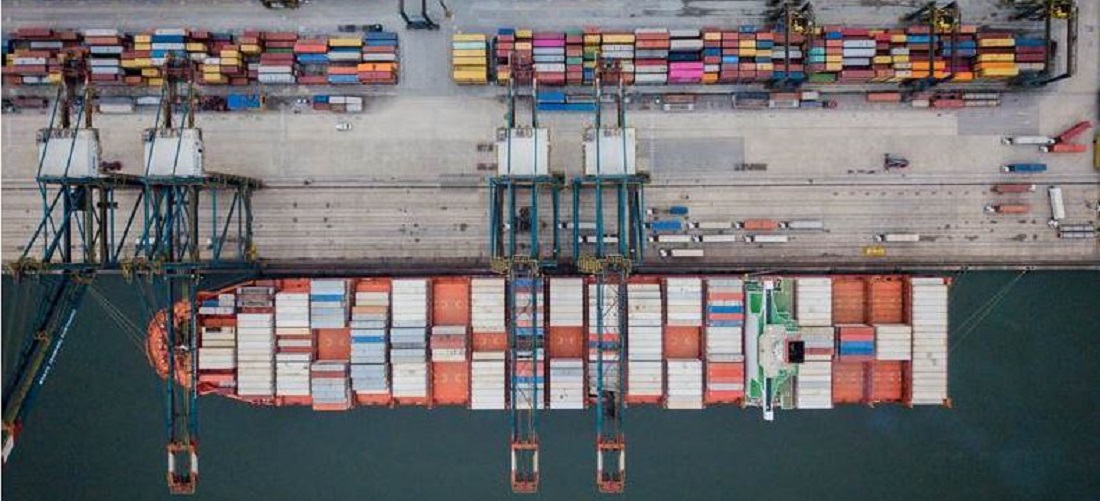
Brazil audit court endorses Port of Santos privatization
Nov, 14, 2022 Posted by Gabriel MalheirosWeek 202245
The final report released by the Brazilian federal court of audits TCU did not express major reservations over the privatization of the Port of Santos, the largest in the country. The adjustments required by the court of accounts were deemed minor by the authorities backing this project, which is one of the Bolsonaro administration’s priorities in the infrastructure field. Despite that, the process has been delayed many times in the recent past.
The document issued by the Port and Railway Infrastructure Inspection Department, known as Seinfra, was sent to the office of the rapporteur, Minister Bruno Dantas, who wants to debate the process in a plenary session next week. However, behind-the-scenes machinations are trying to postpone the process once more by asking one of the court’s ministers to open a revision process. Aides to President-elect Luiz Inácio Lula da Silva have shown opposition to the project and are unwilling to go ahead in 2023.
The government voluntarily made two revisions during conversations with auditors. One of them pertained to the increased Weighted Average Capital Cost (WACC), which rose from the 7.35% initially proposed to 8.73% per year. Another was the change in the minimum grant amount, which fell from R$3.015 billion to R$2.557 billion.
What is at stake at the court is the privatization of the Santos Port Authority (formerly Codesp) and, together with it, the concession of the port authority to private parties for 35 years, with a possible five-year contract extension (in case of economic rebalancing). The contract provides R$ 6 billion in investments and another R$ 20.6 billion in operating expenses, including dredging.
The Port of Santos, the second largest in Latin America and 45th in the world regarding containers, handles 27% of all Brazilian foreign trade. Last year, it received 147 million tonnes of cargo and 4.8 million containers. Ten thousand trucks and 1,200 train cars pass through the port complex daily.
See below a chart comparing container exports and imports at the Port of Santos from Jan 2019 and Sep 2022, according to the DataLiner business intelligence service.
Exports and Imports – Port of Santos | Jan 2019 – Sep 2022 | TEUs
Source: DataLiner (click here to request a demo)
Among the improvements cited by those that advocated in favor of the privatization is the deepening of waterways to 16 meters by 2026 and 17 meters by 2033 (today it is 15 meters), new shipping berths, the relocation of the passenger terminal to the Valongo region, investments of R$ 664 million in road works and the construction of a Santos-Guarujá underwater tunnel. In addition, implementing the VTMIS (port traffic management system) and the ISPS Code (security system) is also part of the contract’s requirements.
Critics point out that such a plan lacks similar examples to compare in the international arena and no tests in Brazilian territory whatsoever. The only once-public port authority privatized in the country is Codesa, in the state of Esprítio Santos, which occurred only two months ago.
Lula’s Workers Party prefers an IPO for the Santos Port Authority while also keeping control in the hands of the state, in addition to offering concessions for specific services like dredging.
The private sector has operated port terminals for the actual movement of cargo since the 1990s. What remained in the hands of the state were the port administrations. To put it in simple terms: the terminals are like stores inside a mall. The administration is the commercial center itself, which expands and maintains the local infrastructure.
Without an endorsement by the new government, the call for bids may go public, but the auction is unlikely to take place. Therefore, to avoid curbing future management, some articulated a request for a court inspection over the privatization of the Port of Santos by a minister of the TCU.
In the court’s report, there is no definitive obstacle to the privatization of the port, but the auditors express doubts about the Santos-Guarujá underwater tunnel. This work would require R$ 4.2 billion (out of R$ 6 billion) to be invested right off the bat.
Seinfra highlights aspects such as construction risks and the tunnel’s demand studies methodology. For example, the reference year was 2019 (pre-pandemic); traffic counting took place during only seven days and excluded weekends in a vacation region. The calculation of the tariff for the use of the tunnel – a simple average between the highway toll and the ferry tariff – between the two cities was also criticized. Similarly, auditors contested that motorcycles would be exempt from paying the tariff.
The novelty of the work, which implicates risks of interested parties setting unfair prices and impacting the outcome of the competition, is another point raised by the auditors. “The underwater tunnel technology has never been used in the country, and innovation increases the associated risks. The choice for an immersed tunnel in the country, more common in Europe, the USA, and Asia, may implicate the use of additional resources to adapt to local specificities, in addition to the unavailability of specific equipment, construction materials, and specialized labor.”
Source: Valor Econômico
To read the full original article, please go to: https://valor.globo.com/brasil/noticia/2022/11/14/relatorio-do-tcu-da-aval-a-privatizacao-do-porto-de-santos.ghtml
-
Trade Regulations
Nov, 11, 2019
0
Saudi Arabia authorizes eight new Brazilian slaughterhouses for beef export
-
Features
Mar, 09, 2022
0
Datamar will present DataLiner Lite at Intermodal South America
-
Shipping
Aug, 04, 2022
0
Liner schedule reliability improves for the first time since the start of the pandemic
-
Ports and Terminals
Sep, 16, 2024
0
Container Ship Collides with Ferry in Santos Channel; No Injuries Reported

